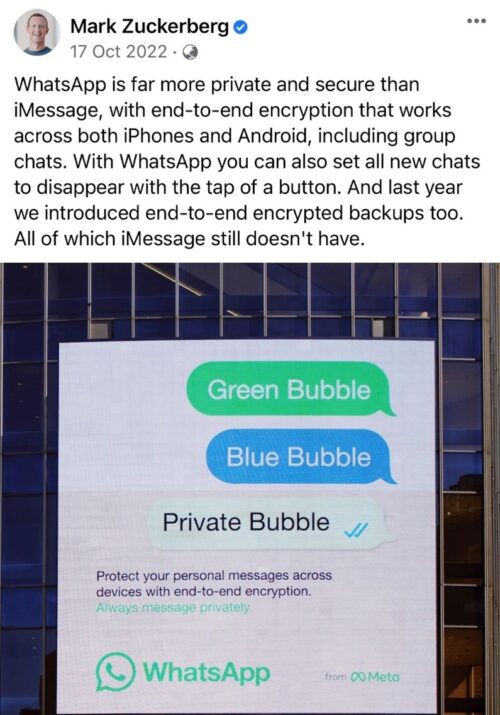Picture this (Also, metaphorically, you link it with your department): You are working remotely as your office is testing the hybrid workplace model when your VPN connection suddenly fails, causing a delay in sending an important email to a client. Attempts to contact the IT helpdesk are unsuccessful as they also work remotely. A ticket is eventually raised, and the issue is resolved with a simple reboot, but the delay causes the email to be overdue. Implementing a self-service portal could have further reduced the turnaround time in this situation.
What if you could have done it all on your own? Yes, we have now discussed IT-related concerns; consider B2B, B2C, and D2C; billions of customers across the world are waiting for brands to answer their inquiries, which can be readily answered with ChatBot, and organizations and brands can easily benefit from it:
- They reduce consumer wait times.
- They aid in resolving support cases.
- They provide you with leads.
- They enable your consumers to help themselves.
Think of chatbots as personal shopping assistants for your customers. By analyzing every conversation they have with your brand, these bots can learn exactly what each customer wants, how they feel about your products, and their buying intent. This data allows you to create highly personalized experiences for each customer at every stage of the sales process. Not only will this delight your customers, but it will also drive significant ROI in AI technology.
Smart Collaboration Saves Time And Costs
In recent years, WhatsApp has exploded in popularity as a messaging app, with billions of users worldwide. With messaging becoming a preferred customer engagement channel, a new strategic partnership between Meta and Salesforce promises to help businesses build experiences to chat with customers on the Meta-owned messaging service WhatsApp.
In a Facebook post, Zuckerberg said:

Salesforce’s State of the Connected Customer surveyed over 13,000 consumers and nearly 4,000 business buyers across 29 countries and found that 90% of customers say the experience a company provides is as important as its products or services, and 66% of online adults globally prefer messaging as a way of communicating with a business.
Are you up to speed with this latest development? However, before diving headfirst into implementing a chatbot solution, there are several key considerations that you should keep in mind.
1) Understand Your Company’s Business Needs
The first step in implementing a chatbot solution is understanding your company’s business needs.
- Are your customers demanding immediate responses?
- Are your traditional online forms and call centres not meeting their needs?
- Are your customer service representatives answering the same questions repeatedly?
If any of these ring true for your business, it may be time to consider implementing a chatbot solution.
2) Select a Chatbot Solution with Omnichannel Support
Before choosing a chatbot platform, you must have a good idea of the platforms you will use to provide customer support. This is especially important if you are planning to provide omnichannel support, providing seamless, instant and efficient support to the customers regardless of the platform they use. Make sure your chosen chatbot platform can connect your bot with messaging and social media channels, such as Skype, Slack, Facebook Messenger, Twitter, Telegram, WhatsApp, and the web.
3) Multilingual Chatbots Are Even Better
With language barriers creating insurmountable challenges for international businesses, innovative chatbots provide another important advantage: the ability to understand different languages and converse in each one. Thanks to recent breakthroughs in deep learning and Natural Language Processing (NLP) technologies, this feature is significant for businesses considering expanding to new markets and countries with entirely new customer bases and languages.
4) Choose A Customizable And Accessible Chatbot Platform
When building a chatbot, choosing a platform that is easy to use and does not require coding expertise is important. This allows your customer experience professionals to build the perfect chatbot for your business with hands-on knowledge and expertise.
5) The User Experience is Key
The final consideration when implementing a chatbot solution is the user experience. A chatbot must be backed by human-centred design, industry experience, and domain knowledge. Additionally, it’s essential to choose a chatbot development platform that supports speed, scalability, and flexibility to support customers and customer service representatives around the clock. It’s important to remember that while a chatbot is designed to provide relevant information, there will always be instances where it may not be able to answer or understand a customer’s question or inquiry. Human agents and chatbots must work together to build the best experience for the customer.
Revolutionizing Customer Service: How Salesforce Chatbot Integrates with WhatsApp?
If you consider that a chatbot may be something your business is looking to invest in, you may now ask yourself just how to do so! You can do this in several ways, but it is recommended that you do so within your central source of truth: Salesforce.
WhatsApp prevents you from spamming your clients by not supporting promotional messages or large-scale, recurrent alerts. WhatsApp’s customer service comprises two sorts of messages:
- Customer-initiated conversations – If the customer contacts the company directly over WhatsApp, the customer service agents can attend to their queries directly in Service Cloud Console.
- Company-initiated outbound notifications – A brand can initiate a WhatsApp discussion with a consumer, but only through pre-approved notifications. Salesforce has issued a list of what you can send and how it can be used.
With over 1.6 billion users worldwide, WhatsApp has established itself as a go-to platform for businesses looking to connect with customers. However, WhatsApp’s strict guidelines on promotional messages and large-scale notifications can make it difficult for companies to utilize the platform entirely. Salesforce has solved this problem by offering an officially-backed solution that allows businesses to communicate with customers in a real-time, organized manner, with performance analytics and a history of communications at their fingertips.
But that’s not all. Salesforce has also integrated Einstein Bots to automate responses, alerts, and notifications, which helps improve the SLA (Service Level Agreement) and increase customer satisfaction. Therefore, as a result of the agreement between Salesforce.com Inc. and Facebook, Inc., customer service over WhatsApp is now a reality.
So if you’re a C-level executive in a B2C or B2B business, you should ask yourself: do you want to open up this channel to 1.6 billion potential customers?
Stay tuned for our next blog, where we’ll dive into the technical details of connecting WhatsApp to Salesforce and automating customer support with bots, step by step.
Notes:
- https://www.salesforce.com/resources/research-reports/state-of-the-connected-customer/
- https://help.salesforce.com/s/articleView?id=sf.mc_jb_whatsapp_messages_and_use_cases.htm&type=5


Wonderful Article, nice to read this kind of Interesting Article. Nice Post.